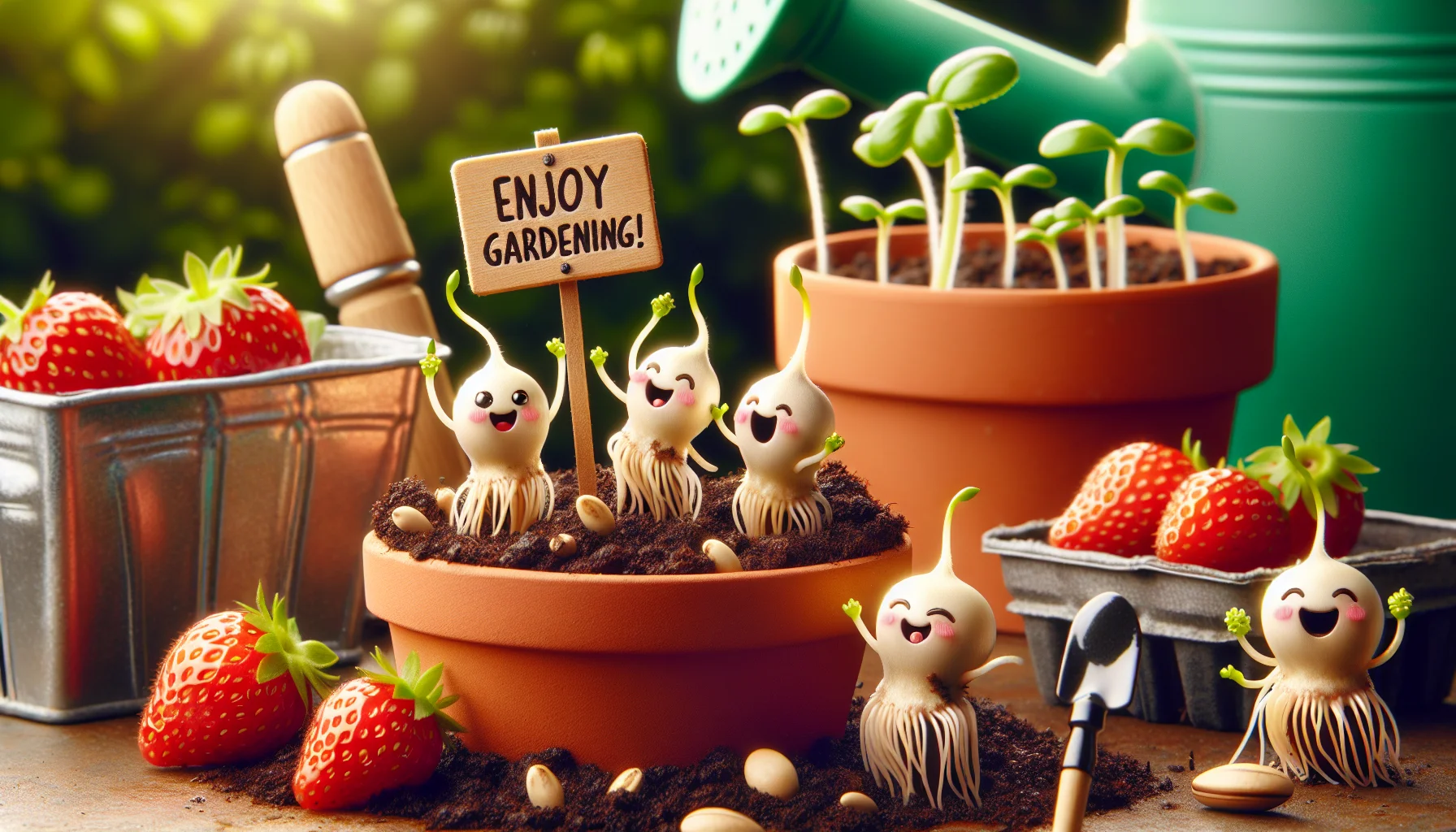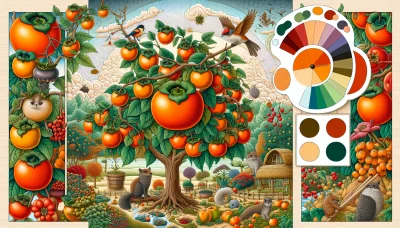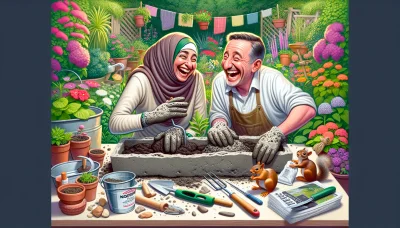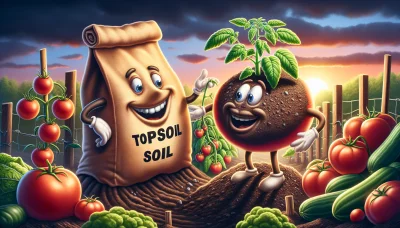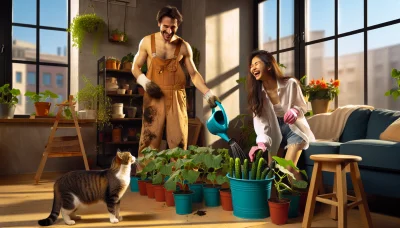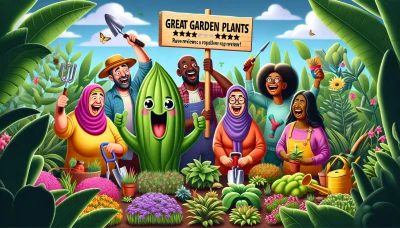Germinating strawberry seeds Quiz
Test Your Knowledge
Question of
Introduction to Germinating Strawberry Seeds
Germinating strawberry seeds is a rewarding process for any gardener looking to grow their own strawberries from scratch. Unlike buying pre-grown strawberry plants, starting strawberries from seeds can be more economical and offers a wider variety of choices in terms of strawberry species. The process involves planting the seeds in a suitable growing medium, ensuring they receive the right amount of light, warmth, and moisture to sprout. It's crucial to maintain a controlled environment, especially during the early stages of germination, to ensure the seeds develop into healthy seedlings. Germination typically takes anywhere from one to six weeks, depending on the conditions. Understanding the basics of strawberry seed germination is essential for anyone interested in cultivating these delicious berries in their garden.
What You Need to Know Before Starting
Before you embark on the journey of germinating strawberry seeds, it's essential to understand the prerequisites to ensure a successful germination process. Firstly, the best time of year to start germinating strawberry seeds is late winter or early spring. This timing allows your seedlings to grow strong enough to be transplanted outdoors after the last frost. Secondly, when it comes to the types of strawberry seeds suitable for germination, it's important to choose high-quality, non-GMO seeds, preferably from reputable suppliers. There are various strawberry varieties available, so consider whether you prefer June-bearing, everbearing, or day-neutral strawberries as each type has its own growth habits and fruiting times. By starting with these basics, you'll be well on your way to enjoying your own home-grown strawberries.
Step-by-Step Guide to Germinating Strawberry Seeds
- Collect or Purchase Seeds: Start with fresh strawberry seeds, either harvested from ripe strawberries or bought from a reputable supplier.
- Prepare the Seeds: If harvested, clean the seeds gently to remove any fruit residue. Dry them thoroughly before use.
- Cold Stratification: Strawberry seeds require a cold period to break dormancy. Place the seeds in a sealed container with moist sand or a moist paper towel and refrigerate for 3-4 weeks.
- Prepare the Soil: Use a well-draining seed starting mix in shallow trays or pots. The soil should be loose, fertile, and slightly acidic.
- Sow the Seeds: After stratification, sow the seeds on the surface of the prepared soil. Do not cover them with soil as they need light to germinate.
- Maintain Moisture: Keep the soil consistently moist but not waterlogged. Use a spray bottle to mist the surface gently.
- Provide Light: Place the trays or pots in a bright location but out of direct sunlight. Supplement with grow lights if necessary.
- Keep Warm: Maintain a temperature of 60-70°F (15-21°C) for optimal germination. Avoid drastic temperature changes.
- Watch for Germination: Seeds should start to germinate in 2-4 weeks. Keep the soil moist and continue providing light as they grow.
- Thin Seedlings: Once seedlings develop true leaves, thin them out to prevent overcrowding. Keep the strongest seedlings.
- Transplant: When seedlings are strong enough and all danger of frost has passed, transplant them outdoors in a well-prepared bed or containers.
Optimal Conditions for Strawberry Seed Germination
For successful strawberry seed germination, certain environmental conditions are crucial. Temperature plays a pivotal role, with the ideal range being between 60°F and 75°F (15°C and 24°C). This temperature range encourages the seeds to awaken from dormancy and begin the germination process. Light is another essential factor; strawberry seeds require ample light to germinate effectively. Placing the seeds in a location where they can receive plenty of indirect sunlight will facilitate optimal growth. Soil type also significantly affects germination rates. The soil should be well-draining yet retain moisture, with a slightly acidic to neutral pH, ideally between 5.5 and 6.8. Ensuring these conditions can greatly enhance the germination success rate of strawberry seeds, leading to healthy seedling development.
Common Mistakes to Avoid
- Planting Seeds Too Deep: Strawberry seeds require light to germinate, so avoid burying them too deeply. Lightly press them into the surface of the soil instead.
- Overwatering: While maintaining moist soil is crucial, too much water can drown the seeds or lead to fungal diseases. Use a spray bottle to gently mist the soil, keeping it consistently moist but not soggy.
- Ignoring Temperature Requirements: Strawberry seeds need warm temperatures, around 60-75°F (15-24°C), to germinate effectively. Placing them in a location that's too cool can significantly delay or prevent germination.
- Using Old Seeds: While strawberry seeds can remain viable for several years, their germination rate decreases with age. Use fresh seeds or those stored properly to increase your success rate.
- Forgetting to Stratify Seeds: Some strawberry varieties require a period of cold treatment (stratification) before they will germinate. Check the requirements for your specific seeds and, if necessary, store them in the refrigerator for 2-4 weeks before planting.
- Not Providing Enough Light: After germination, seedlings need plenty of light to grow strong and healthy. A common mistake is not providing enough light, leading to weak, leggy plants. Ensure they receive at least 6-8 hours of direct sunlight or use grow lights.
- Lack of Patience: Strawberry seeds can take 2-3 weeks to germinate, sometimes longer. Don't give up too soon and keep maintaining the right conditions for germination.
Caring for Strawberry Seedlings
After your strawberry seedlings have germinated, it's crucial to provide them with the right care to ensure they grow into healthy, fruit-bearing plants. First, ensure they receive consistent, gentle watering, keeping the soil moist but not waterlogged to prevent root rot. Seedlings thrive in well-draining soil and may need watering daily, especially in warmer temperatures. Feeding your seedlings with a balanced, liquid fertilizer every two weeks will support their growth, but be careful not to over-fertilize, which can harm delicate roots. When your seedlings have developed several true leaves, they are ready to be transplanted. Choose a cloudy day or late afternoon to transplant, to reduce stress on the seedlings. Gently loosen the soil around each seedling, being careful not to damage the roots, and plant them in their new location at the same depth they were growing before. Space them about 12-18 inches apart to allow for ample growth. With the right care, your strawberry seedlings will develop into strong plants that will reward you with sweet berries.
FAQs on Geritating Strawberry Seeds
| Question | Answer |
|---|---|
| How long does it take for strawberry seeds to germinate? | Strawberry seeds can take 2 to 3 weeks to germinate under optimal conditions, which include temperatures of 60-75°F (15-24°C) and consistent moisture. |
| What are the success rates for germinating strawberry seeds? | Success rates can vary widely, but with proper care and optimal conditions, germination rates of 70-85% are possible. Factors such as seed quality and planting depth can significantly impact success rates. |
| Do strawberry seeds need light or darkness to germinate? | Strawberry seeds require light to germinate. Place them on the surface of the soil and lightly press them in, but do not cover them with soil. Ensure they receive ample indirect sunlight or artificial grow light. |
| How should I prepare the soil for germinating strawberry seeds? | Use a well-draining soil mix, ideally with a pH between 5.5 and 6.8. A mix of peat, vermiculite, and perlite is often recommended to ensure good drainage and aeration. |
| Can I use a heating mat for germinating strawberry seeds? | Yes, a heating mat can be beneficial, especially if you're germinating seeds in a cooler environment. It helps maintain a consistent soil temperature, which is crucial for germination. |
| Why are my strawberry seeds not germinating? | Common reasons include planting the seeds too deep, soil that is either too dry or too wet, inadequate light, or temperatures that are too low or too high. Reviewing these conditions and adjusting as needed can improve germination rates. |
